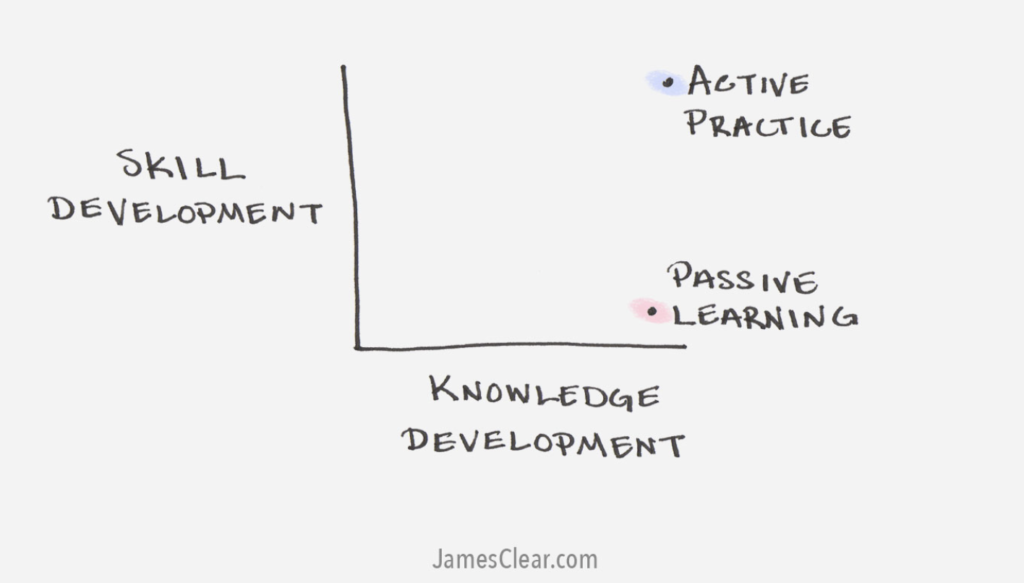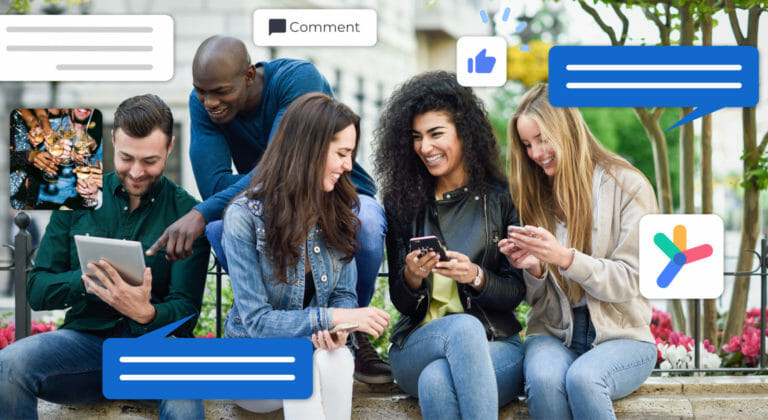As human beings, we have a need to grow. You may want to learn a new language, become a better parent, or travel. In the case of great organizational leaders, they establish goals to guide employees’ efforts. You, as a leader, may want your company to increase revenue, be more compliant, or become better at managing projects to deliver impact. To achieve this, seeking more knowledge (for you or your employees) is not always the only answer. Putting the knowledge into practice may be the piece you’re missing. Continue reading to discover 3 ideas to start doing so.
Spreading knowledge and information is certainly important! And your training programs and learning systems are often key to doing so. Yet, to have even more of an impact consider going one step further.
Keep in mind: practice is learning, but learning is not practice.
The difference between passive learning and active practicing
In his book The Practicing Mind, Thomas Sterner describes the difference between learning and practicing:
“When we practice something, we are involved in the deliberate repetition of a process with the intention of reaching a specific goal. The words deliberate and intention are key here because they define the difference between actively practicing something and passively learning it.”
—Thomas Sterner, The Practicing Mind
As a salesperson, you can read and learn a lot about how to sell, but it doesn’t mean that you are becoming better at selling. In sum, when you passively learn you create new knowledge. When you actively practice you develop new skills. James Clear, the author of Atomic Habits has visualized this in a simple but powerful way, depicted in the graphic below:
Here are 3 ideas to promote active practicing within your organization:
1. Encourage regular reflection and sharing
The majority of our thinking is fast and intuitive and most of our actions are habits. To change it up we need to start being more aware of our behavior. One way to spark that awareness within your organization is to encourage employees to share their learnings and reflections. As a leader, you could lead by example and continuously share, in order to show the importance to your employees. Encourage them to share, and celebrate when they do. Starting to become more aware of your own learning is the first step towards conscious change.
2. Deliver new information in small, spaced out bites
Do not focus on many goals and changing or learning many behaviors at the same time. Instead, focus on one or two new behaviors and goals. Your best bet is to approach development with microlearning – structure the learning content to be delivered in small, bite-sized pieces. And not all at once, but over time like a journey or learning path.
Additionally, make sure the same content is repeated multiple times and focus on being actionable.
Bonus: At the end of most learning bites, include an exercise that encourages learners to put the knowledge into practice in the real world.
3. Make it easy to share learnings from practice
Human beings tend to be quite social and enjoy feeling close to each other. It motivates us to see people learn – especially people we care about.
One thing is to encourage your employees to share learning and reflections. Another is to make it easy for your employees to connect and share best practices and learnings with each other. Provide them with a space to do so. Sharing connects us. It inspires us. It makes it easier for us to share and learn.
Remember to celebrate the personal reflections and learnings and trust your employees
In a safe environment to share reflections and learnings, these are appreciated and celebrated.
People integrate with what resonates with them. As a leader, you can have an idea of what is important to learn, you should also trust that the individual takes in what is important to them, and will be able to turn it into action. Then, celebrate them trying. You must appreciate the action. You must celebrate practice.
Don’t stop at enabling passive learning; encourage and celebrate active practice.
This blog post was written by Christian Lykke-Rasmussen, Senior Customer Success Manager at Actimo – a Kahoot! company. He is a learning practitioner, best practice curator, and storyteller. Christian is committed to the mission of making learning awesome.






